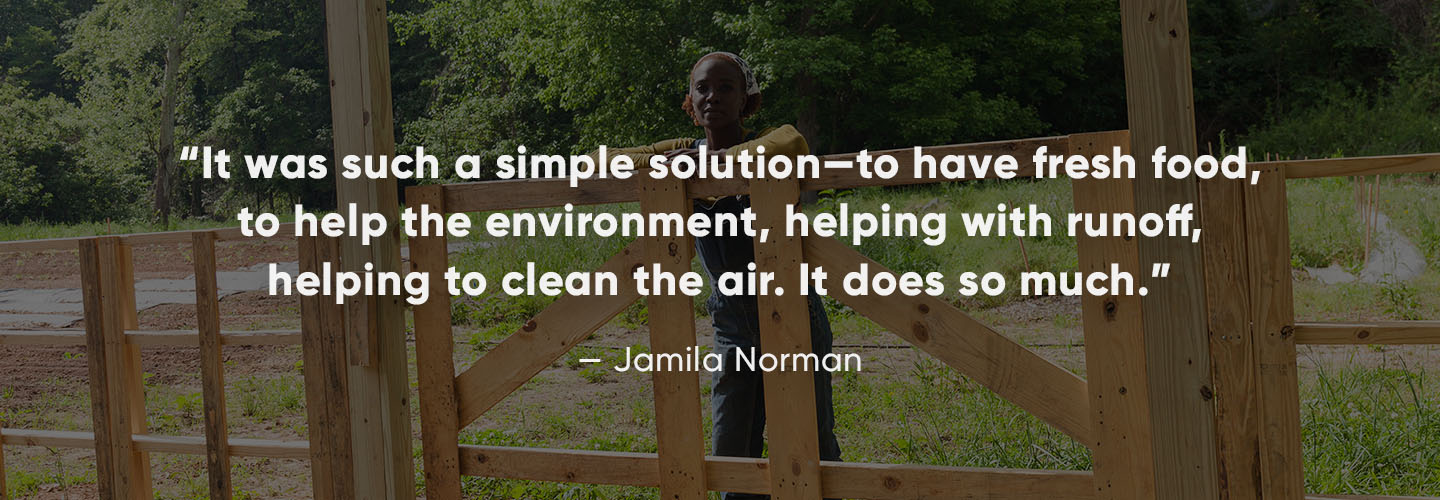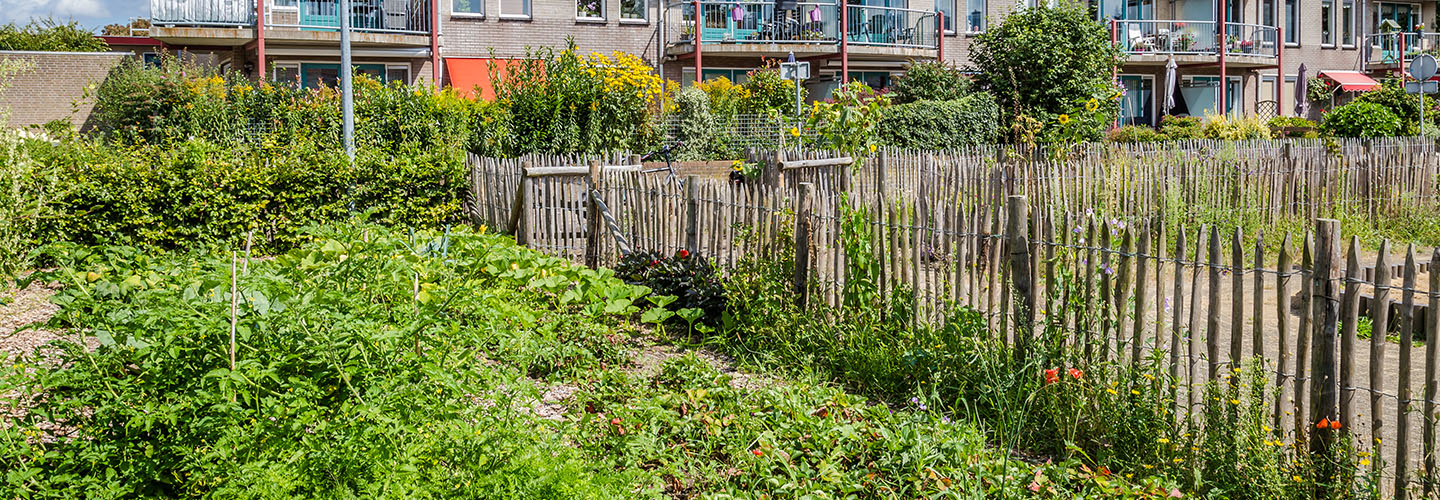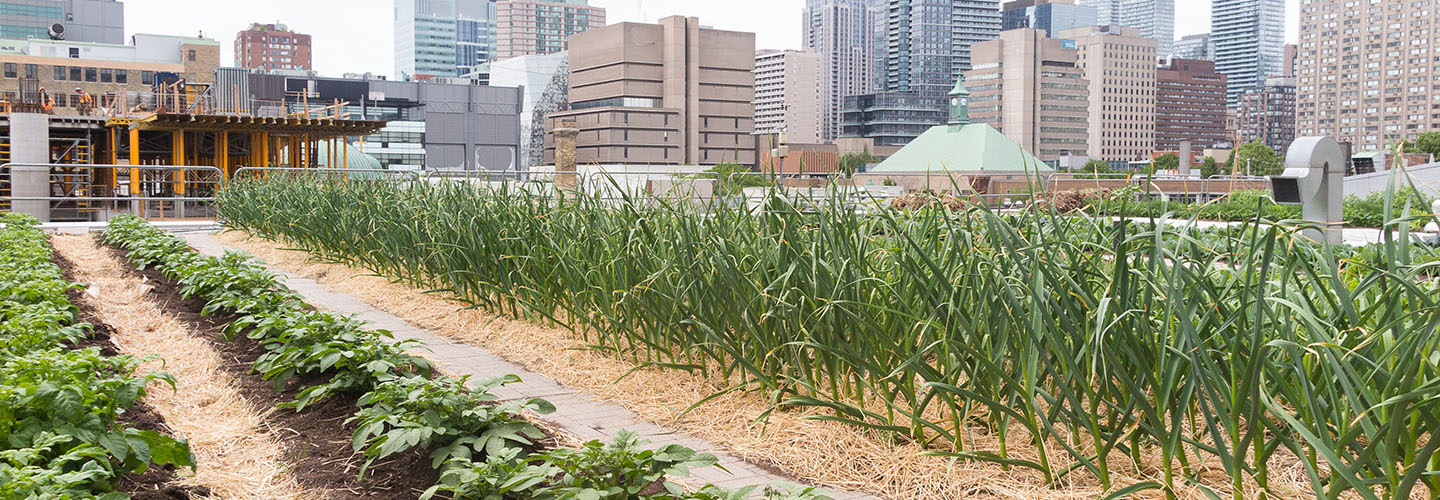Big City Farmer

A few years ago, if you lived in Atlanta’s struggling West End and went shopping for really fresh produce, you were probably out of luck. Your options were limited to the meager selection at a single grocer—which meant that the neighborhood was what’s known as a “food desert.”
That problem was among the reasons Jamila Norman founded Patchwork City Farms back in 2010. “I want to grow here so I can be close to people who need it,” she says. “People are just really inspired and hungry for something different and fresh and natural.”
Norman’s little farm, and the challenges she faced in bringing her first crop to market, reflect the growing pains of a larger trend around the U.S. and the world. Small urban farms are on the rise, working to reduce food deserts and improve food security in densely populated areas, and serving up health and environmental benefits. Their steady growth is good news for cities everywhere—and efforts are underway among advocates and elected officials to incubate small, newly opened operations like Norman’s. But doing so isn’t easy. Here’s a look at how it’s playing out—and what’s at stake.
Feeling the pinch
Norman first tried her hand at farming as a volunteer in 2008 while working full-time as an environmental engineer, and the experience immediately resonated. She is of Caribbean heritage, and her parents were vegetarians who prioritized health and wellness. In 2010, she and a partner took over a one-acre farm at a nearby middle school that had been run by a nonprofit and formed Patchwork City Farms.
Over the next four years, they sold produce at farmers markets and to chefs around the city, developing a strong local following and scoring an invitation to Italy to represent the state of Georgia at Terra Madre, a program run by Slow Food International. But in 2014, she ran into the first of a series of obstacles. As the area gentrified, the farm’s neighbors came to believe that her acre of land would be better off if put to some other use, and Patchwork was asked to leave. “It was heartbreaking,” Norman says.
A second lease deal fizzled out as well, leaving Norman frustrated. (Her partner had left the business after starting a family.) “I vowed never to farm again on land I didn’t own,” she recalls.
After her two setbacks, Norman found a path forward mostly through happenstance. She searched for “land for sale in Atlanta” and up popped a nearby property that had never been developed and was in her price range. She called a real estate agent and had the 1.2-acre plot under contract within days. “I was like, ‘Is this real?’” she says, laughing. “I just felt like it was a godsend.”

Creative solutions
Access to urban agricultural land is “a huge issue,” says Mchezaji “Che” Axum, director of the University of the District of Columbia’s Center for Urban Agriculture and Gardening Education, where he oversees the university’s Master Gardener, Sustainable Urban Agriculture, and Ethnic and Specialty Crops programs. “You couldn’t even buy an acre of undeveloped land here in D.C. for less than $90,000.” It’s tough to pay off that kind of mortgage growing carrots and arugula.
But when farmers succeed in establishing themselves in urban areas, Axum says, the benefits are many: they provide fresh food in areas where nutritious options are often scarce, while improving the environment and food security in those neighborhoods. “This food revolution has been happening for a while, and it’s just growing bigger and bigger every year,” he says. “I’m happy to see the momentum.”
Urban farms provide fresh food in areas where nutritious options are often scarce, while improving the environment and food security in those neighborhoods.

In hopes of boosting the trend, cities are banding together with nonprofits and universities to encourage urban food-growing enterprises. In 2014, Washington, D.C., passed a law that enables owners of undeveloped land to get a 90 percent tax abatement if their properties are actively farmed. The district has undertaken an outreach effort to push further. “The city is looking at vacant lots to find out who owns them, to ask them, ‘Would you like to lease to an urban grower?’” Axum says.
Other municipalities are seeking equally creative ways to smooth the way forward for urban farmers. In Cleveland, for example, the Gardening for Greenbacks program delivers grants of up to $5,000 for equipment needed to grow and sell produce. Meanwhile, advocates in cities all over the country are exploring other solutions for carving out growing space in crowded cities, including planting crops on rooftops, around vacant buildings and yards, and in abandoned parks.
These programs are often the result of concerted work on the part of advocates and educators to point out the benefits of urban growers to elected officials. “There has at times been a disconnect between farmers and policy-makers—a lack of understanding of how to help,” says Leonard Githinji, Ph.D., an extension specialist and assistant professor at the Virginia Cooperative Extension.
Githinji says he sees progress in recent years in terms of various policies promoting openness to backyard chickens and composting programs that provide fertilizer to farms, among other efforts.
This is reflected in urban farming’s overall growth: 800 million people around the world work as urban growers, according to the UN’s Food and Agriculture Organization, and they account for 15 to 20 percent of the global food supply. Another study pegs the output of urban agriculture at 180 million metric tons of food a year—around 10 percent of the total output of legumes, roots and tubers, and vegetable crops. And a survey attempting to measure the number of urban farms in the U.S. drew responses from 315 growers from Portland, Maine, to Oakland, Calif.; the data showed that urban farmers tended to be younger—44, on average—than the average farming population and that urban farms were more likely to be run by women (53 percent).
Around the world, 800 million people work as urban growers, and they account for 15 to 20 percent of the global food supply.

Providing better options
Access to a reliable supply of healthy food has become a huge issue, to the extent that an estimated one in seven Americans faces food insecurity, according to the U.S. Department of Agriculture (USDA).
It’s not just access to nearby grocery stores, or potential disruptions in food deliveries spanning thousands of miles. “I never talk about food security without talking about nutritional security,” Axum says. “You can have fresh produce in stores with little or no nutritional value.”
Local farms help mitigate this. “The contribution of urban agriculture to food security and healthy nutrition,” according to the RUAF Foundation, a Netherlands-based consortium of organizations dedicated to the promotion of urban agriculture, “is probably its most important asset.”
Small-scale urban farmers tend to fill local markets with a diverse bounty of vegetables, including superfoods like kale and chard. Norman herself grows a harvest of 70 crops: rich leafy greens, but also eggplant, peppers, six different types of tomatoes, three different colors of carrots, and much more. “When you’re selling in a retail market and to chefs, they want variety,” she says.
Added benefits
As a woman of Caribbean heritage, Norman was also interested in spotlighting the growing population of women and black farmers. “I wanted to create visibility for all those things,” she says.
According to the USDA, about 14 percent of principal farm owners in the country are women, but that’s a significant increase from as recently as 25 years ago. Women also tend to own small farms that produce high-value crops like vegetables and fruit. Urban farming helps reinforce this trend because these farms don’t require the multi-hundred-acre properties and massive infrastructure investments involved in large-scale farming. Norman, for instance, keeps all her own infrastructure needs in two shipping containers.
Urban farms can also be a boon to the quality of the soil, water, and air in city neighborhoods. According to a recent study published in the journal Earth’s Future, urban farms provide a vast array of what the authors call “ecosystem services,” which include lowering the urban heat-island effect, diminishing stormwater runoff, and achieving energy savings.
Advocates for urban farms also talk about the importance of reducing the huge amount of greenhouse gases produced as food is transported. Most of the food that feeds California’s Bay Area, home to about 7 million people, is brought in by truck or train from as far as 1,000 miles away. By growing food as close as possible to the consumer, and avoiding particularly dirty modes of transport, urban farms can contribute to the effort to reduce emissions.
“We know that the higher the number of food miles, the greater the contamination of the environment and contribution to climate change,” Githinji says. While urban farms will never fully replace all the food such urban centers need, they can help cut down on those food miles.
Growing ambitions
Norman farmed her new land for the first time in 2018. Now, a little over a third of an acre at Patchwork is cultivated; another quarter-acre is wooded; a creek runs through the middle, and the land immediately around it is too wet to farm. The nature of her land will dictate how she uses it. She plans to cultivate mushrooms in the shady wooded areas, set up some beehives, and create an edible landscape with trees and bushes yielding items like rosemary, lavender, and muscadine.
Norman also expects to launch a 20-member Community Supported Agriculture (CSA) offering—a program that allows consumers to subscribe to a part of a farm’s harvest; she’s in the early stages of negotiating three restaurant contracts; and she’s working with a landscape architect on creating engagement opportunities for the public, including Airbnb-type accommodations. She wants people in the area to be able to put their hands in the soil—maybe offer some sort of picking event—while still protecting her investment.
Learning to farm has been one of the defining moves of Norman’s life. “It just was so rewarding,” she says. “As unstable as it was at first in the city to be farming other people’s land, I felt like it was such a simple solution—to have fresh food, to help the environment, helping with runoff, helping to clean the air. It does so much.”